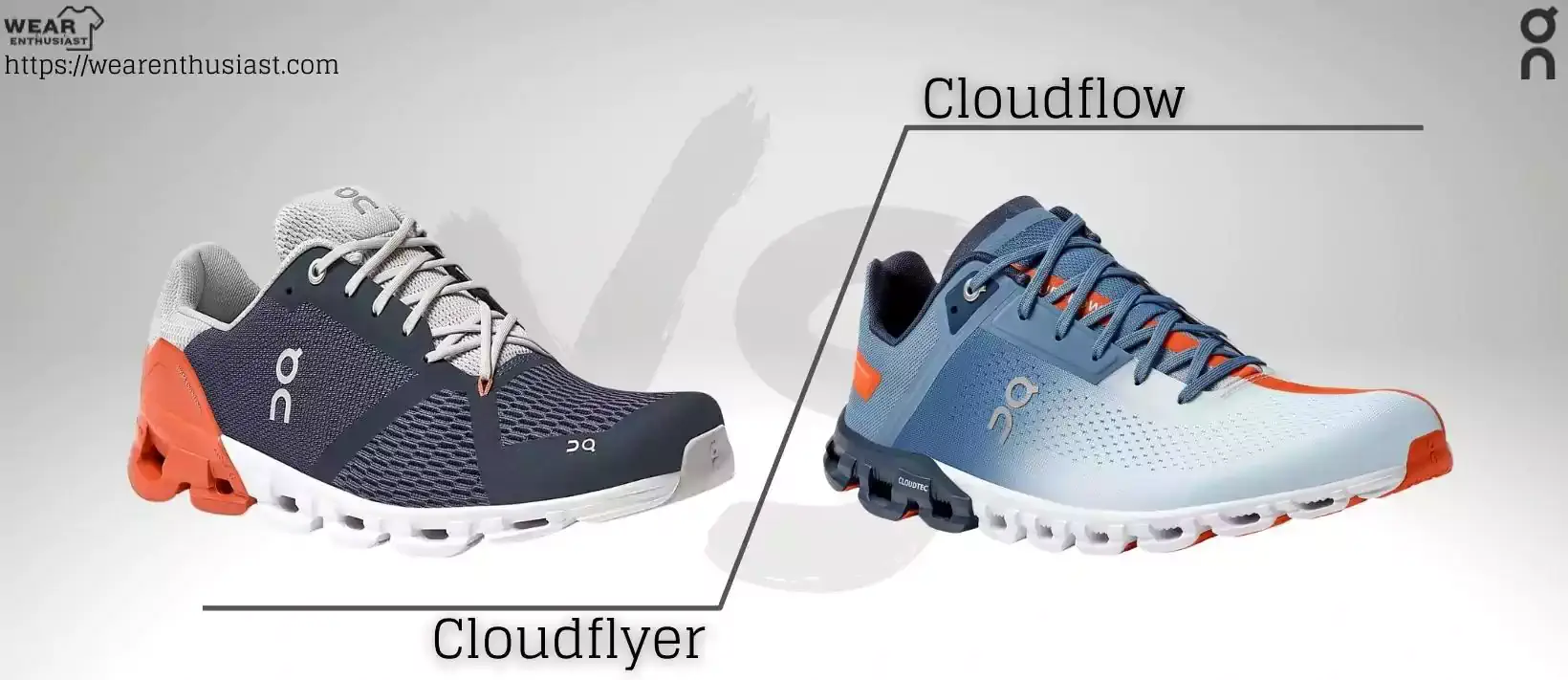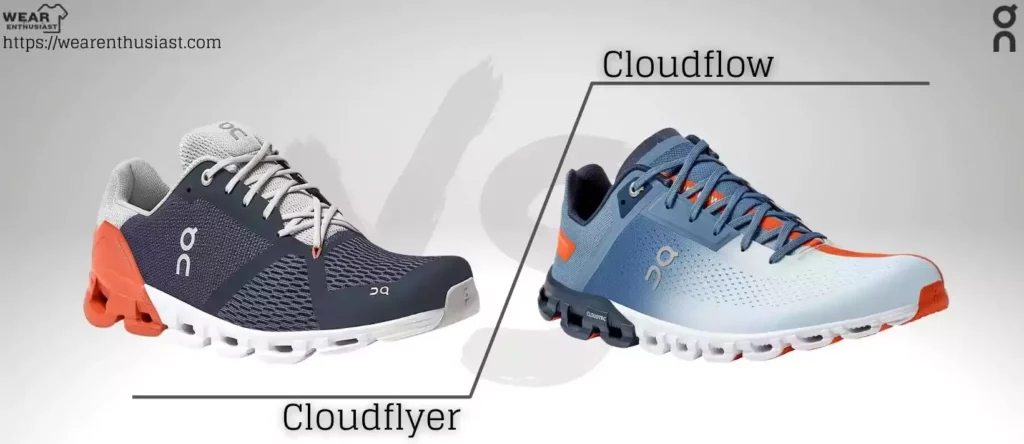
Cloudflyer and Clouflow are two of the most popular ON running shoes because of their amazing features. Each one has unique traits of its own, it’s not surprising to struggle when choosing a pair. So, we have tried to compare them side by side so you can have a general idea of what each has to offer and which one suits you the best.
✒️Cloudflyer vs Cloudflow : Differences Between Two Styles
Here we have tried to compare both shoes based on some general criteria to help you make a better decision.
✤ Weight
One thing about cloud shoes is that they always try to make their shoes as light as possible.
Generally, Cloudflyer is slightly heavier than Cloudflow. They weigh approximately 283g for men and around 243g for women.
On the other hand, Cloudflow is a bit lighter with a weight of approximately around 232 g for men and 204 g for women.
Regular runners tend to like the Cloudflyer because of its slightly heavier frame. However, it depends on individual preferences.
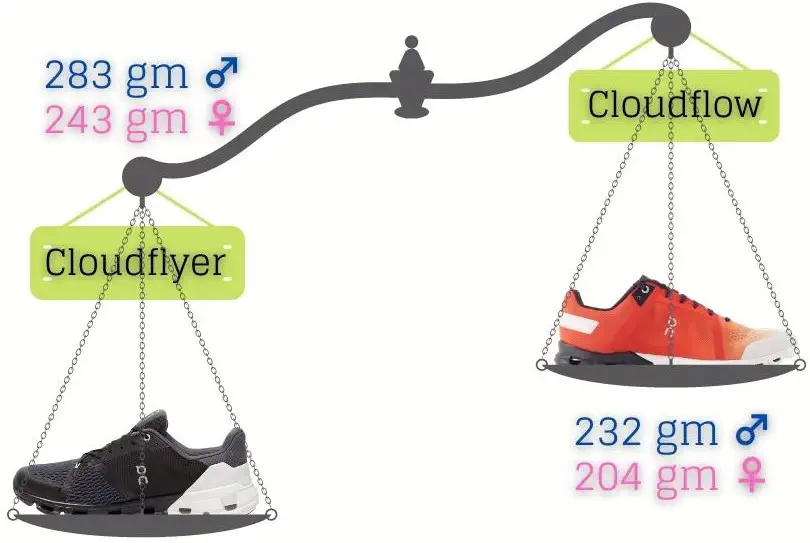
✤ Drop
As for the drop, Cloudflyer has a 7 mm drop while Clouflow comes with a 6 mm drop. Lower drop size puts your Achilles tendon to more work while striking the ground.
So, if you want a more relaxed running experience, it makes sense to choose one with higher drop size. But, as we can see, there’s not much difference between these two.
You can read our article on Cloudswift vs Cloudflow.
✤ Toe Box
Unlike other features, both shoes have quite a difference in the size of the toe box. Cloudflyer has a 20 mm toe box. For people who are a fan of spacious toe boxes and enjoy a little more room around the toes, this one is perfect for them.
However, if you like a smaller toe box that snuggles around your feet just right, then the 11mm toe box of Clouflow is a great option for you. Also, 11 mm may seem too small compared to Cloudflyer. But, this one is designed to stretch and mold around your feet gradually so as not to be uncomfortable.
You can check our article on Cloudstratus vs Cloudflyer.
✤ Material
Every ON shoe is made out of high-quality materials so there’s not much difference here. However, we have tried to break it down here gradually so you have a better idea of what you are looking for.
First, let’s talk about the shoe upper. Both shoes feature a re-engineered seamless upper which is basically their secret to balancing comfort with lightweight. For Cloudflyer, the mesh upper incorporates an airflow optimising pattern to let your feet breathe.
Meanwhile, for Cloudflow they leaned towards a more sustainable option which is 70% recycled polyester. It also has a rubber grip traction pad and a built-in sock liner that prevents your feet from moving around and hurting you while taking a sharp turn on the feet.
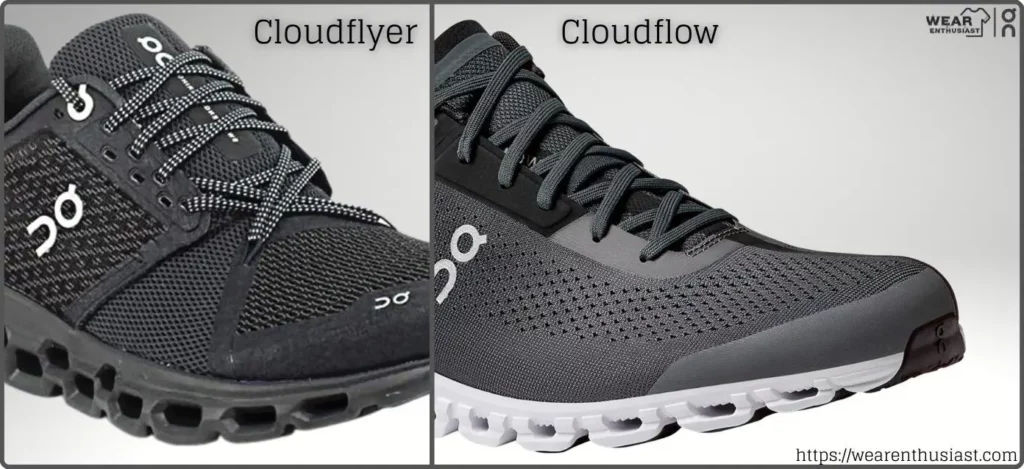
Then we have the outsole. According to the latest update, Cloudflow outsoles are constructed out of a new rubber compound to provide your feet with a better grip while wet.
And, Cloudflyer uses Helion super foam and Cloudtech Pods which is ON’s signature zero-gravity, ultra-lightweight midsole. And lastly, both shoes use super foam for the midfoot to deliver extra comfort.
You can read our article on Cloudflyer vs Cloudswift.
✤ Stability
Stability is a very crucial factor here considering Cloudflyer is specially designed to be a stable shoe whereas Cloudflow is taken as a neutral shoe.
Now as for the Cloudflyer, it’s more appropriate to call them a mild or moderate stability shoe as they don’t have any actual stability piece. The stability mostly comes from the heel clouds to help the running motion without rolling inwards.
Some of the effects also come from the thicker heel counter to support the rear movements. You can’t feel the medial insert pushing into the arch either. Otherwise, there’s not much difference with a stable neutral shoe.
On the other hand, Cloudflow is basically a neutral shoe. However, some appliances may help if you want to play it off as a stability piece. The pair is rather rigid with the speed board running through the full length.
You’ll also feel some centering while running because of the underfoot guidance line. Moreover, there are medial side walls, however minor, to stabilize the foot and keep it grounded. Overall, if you can pass on some details, it can serve as a great stable neutral shoe.
✤ Arch support
While both shoes are great at supporting your feet miles after miles, Cloudflyer may seem a little too firm in this case. This one is designed to have a sturdy yet natural insole that’s not too soft. So if you have high arches that need better arch support, you might pass on this one.
On the contrary, Cloudflow is more on the softer side with a subtle yet good amount of cushioning. So, naturally, it provides better arch support than the other.
✤ Functionality
Functionality is one of the biggest factors that really makes these two pairs differ from each other. Cloudflow has a notably flatter construction so you’ll need to put comparably more effort while running. It’s also commonly used by professional athletes or runners because of its highly responsive performance.
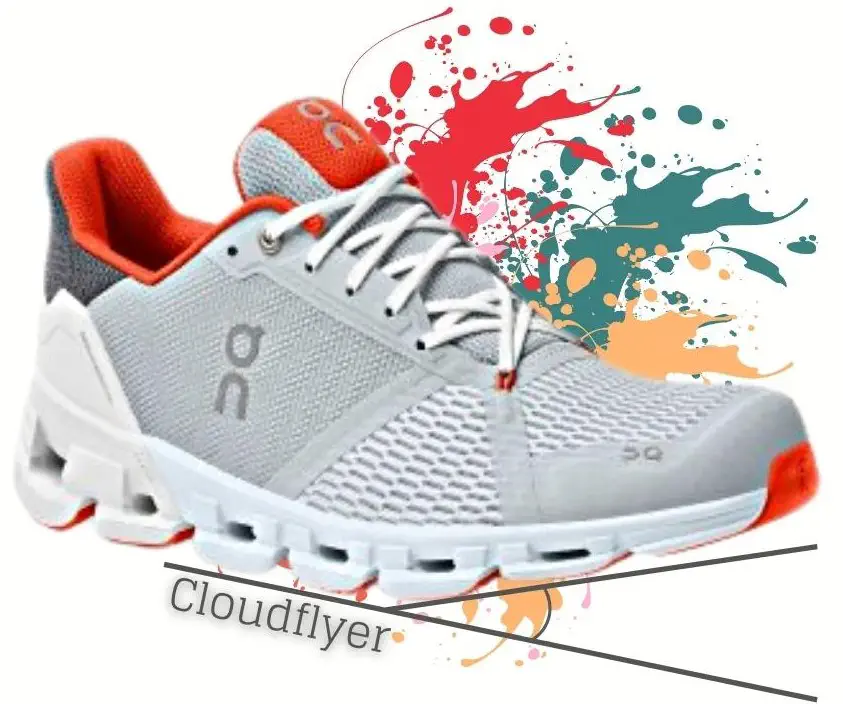
Meanwhile, Cloudflyer features a wider profile to provide extra support for people who need it. It’s great for people who prefer or need some extra support, especially over-pronators.
✤ Cushioning And Comfort
Both Cloudflyer and Cloudflow use highly adaptive super foam inside for extra comfort. It reduces muscle fatigue while running and helps lower your heart rate even after a long run.
✤ Price
Price is just an additional factor here considering your requirements. A pair of Cloudflyer costs around 160$ whereas Cloudflow around 140$. Now if you consider the two and your primary requirements actually match the Cloudflow, that’s great because you’re getting the deal and paying 20$ less than the other.
However, if all the other conditions suit, it’s wiser to pay an extra 20 bucks to get the one that you actually like instead of settling for the one you don’t like just because of the money.

✒️Is Cloudflyer Worth It?
After all the comparisons and discussion, the question arises, isCcloudflyer worth the money? The answer is yes and here’s why, because it works! The thing with Cloudflyer is that they incorporated a few things in their design and made it work like a charm.
The first trait that really makes them stand out is the speed board. It makes sure that every bit of energy you are spending is used properly while ensuring a smooth run. The second trait we must talk about is its construction.
Unlike most running shoes, it’s lightweight, comfortable, and agile. And last but not the least, it’s sleek!. So, if you ask me, I’ll say this functional AND good-looking shoe is definitely worth its money.
Frequently Asked Questions
🔗Are Cloudflow shoes waterproof?
Ans: No. Despite the high-quality upper, water can enter through the ventilation of the forefoot and leads to an immediate moist foot situation.
Conclusion
Cloudflyer and Cloudflow have to be two of the most promising ON running shoes. Like all the other cloud shoes, they were also designed with one goal which is to revolutionize the idea of running and provide the most comfortable running shoes ever. Hope this article helps you find your perfect match and you can continue, as they say, “running on the clouds”

